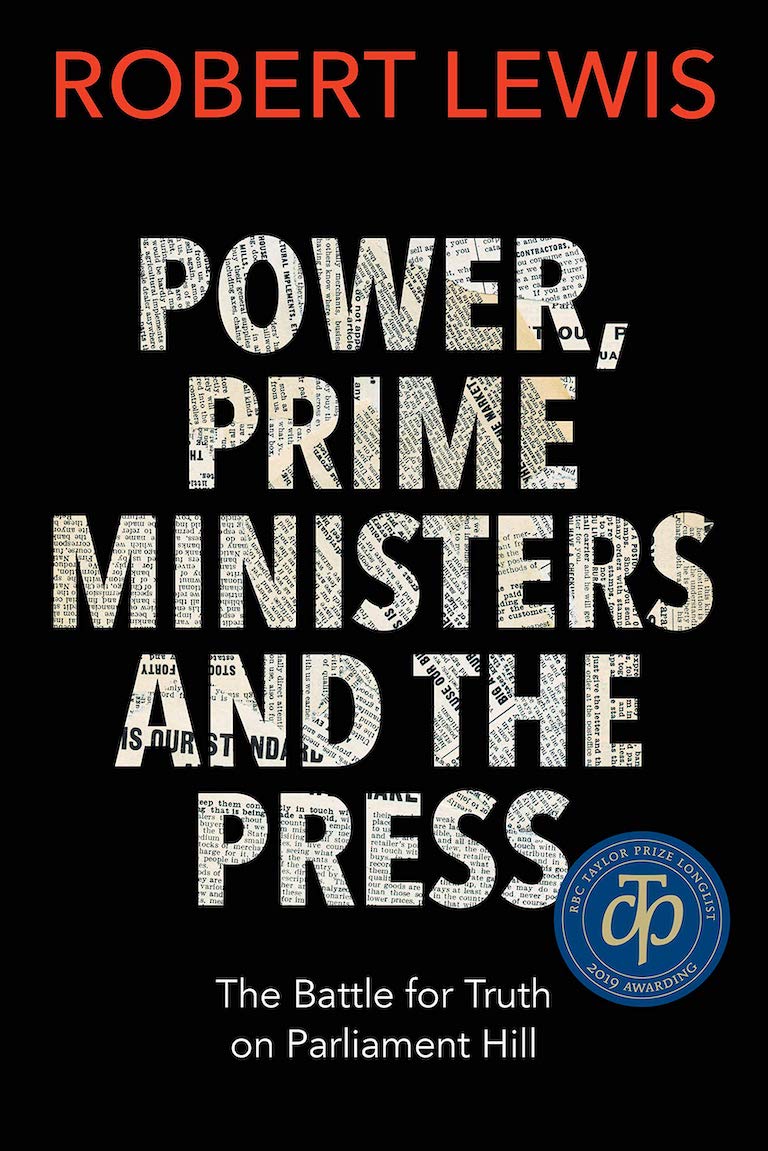Power, Prime Ministers and the Press

Power, Prime Ministers and the Press: The Battle for Truth on Parliament Hill
by Robert Lewis
Dundurn Press,
376 pages, $24
So many fascinating windows onto political history are pried open in books and memoirs from journalists. Freed from their routines of tight deadlines and limited space, members of the fourth estate can write sustained narratives on events and personalities they know intimately. Some, like André Pratte, Graham Fraser, and Jeff Simpson, focus on public-policy issues; others, like Ed Greenspon, Richard Gwyn, Michel Vastel, and Peter C. Newman, document key periods; while still others record their impressions and interpretations.
Power, Prime Ministers and the Press, by former Maclean’s magazine editor-in-chief Robert Lewis, straddles history, memoir, and analysis. Its subtitle — The Battle for Truth on Parliament Hill — grabs your attention, but Lewis mainly discusses the generations of political reporters from the 1860s to our times. He is informative and entertaining, writing in the easy style of magazine journalism about tensions between people elected to govern and those who dig up information for the public.
The book offers both chronological and institutional perspectives while focusing on the Parliamentary Press Gallery, the professional association that has been part of political reporting since Confederation. The gallery is very protective of journalistic independence, which is reflected in its distant, informal relationship with both government and Parliament. Yet the relationship is symbiotic, because politicians need to be seen and heard, while publishers need stories to attract readers, advertisers, and investors.
Lewis brings to life many people who were famous in their days. He describes the partisan and sometimes financial connections between politicians and some journalists in earlier eras, yet he is awed by “reporters who worked long hours for low wages” and for whom journalism “was a calling.”
As his primary source, Lewis uses published memoirs — which are often colourful but very subjective. These are supplemented with archival materials, his own interviews, and earlier studies, notably by Allan Levine. Lewis structures his account around many brief biographies, producing a veritable who’s who that resurrects reporters who were household names when regional papers from Halifax, Quebec City, Winnipeg, and across the West delivered national news with local angles.
While the focus of his book is on Ottawa’s political journalism, similar stories could be written about the coverage of provincial legislatures. Lewis shows how practices in the reporting trade have changed greatly over the past 150 years and have been reflected in the behaviour of the press gallery. Previously, reporters were nearly all male and, he writes, engaged in the jovial energy of a “very clubby place.” Practical jokes, the easy availability of beer, and constant deadline pressures were normal. The few women who joined the gallery were competent and tough — but only starting in 1967 were they invited to the raucous annual press gallery dinner.
Until recently, many Canadian journalists were veterans of the armed forces. They often voiced a strong sense of Canadian identity and independent-mindedness. One example was George Bain, from the Globe and Mail, who had been a pilot in Bomber Command during the Second World War. He was often at odds with newspaper management and was very critical of Prime Minister Pierre Trudeau.
For much of Canada’s first century, friendships between journalists and politicians were the norm. Their off-the-record conversations, sometimes well-lubricated, were a reciprocal source of information. They needed each other but were also wary. The atmosphere began to change after the infamous pipeline debate of 1956, and that change accelerated in the post-Watergate period, when “gotcha” and “adversarial” journalism became the rule.
Lewis becomes more personal when discussing recent changes to journalism and the press gallery that flow from the digital revolution and business pressures. He describes the scrums, the tweets, the twenty-four-seven cycle, and the “insatiable maw ... of continuous blogs and online reports.” The ethos of some journalists has also changed, with their well-honed celebrity status and salaries that match.
With Power, Prime Ministers and the Press, Lewis has not written a policy study with options for the future. Rather, he presents a well-informed narrative that traces the historical arc of Canadian political reporting and the press gallery. Lewis expresses his “lament” regarding current reporter-politician relationships that are “an endless loop of confrontational questions and evasive replies.” In our modern world, which seems to be swamped in “click bait” and to be seething with outrage, he reminds us how thoughtful journalism has helped to shape our democratic culture and our national community.
Themes associated with this article
Advertisement




